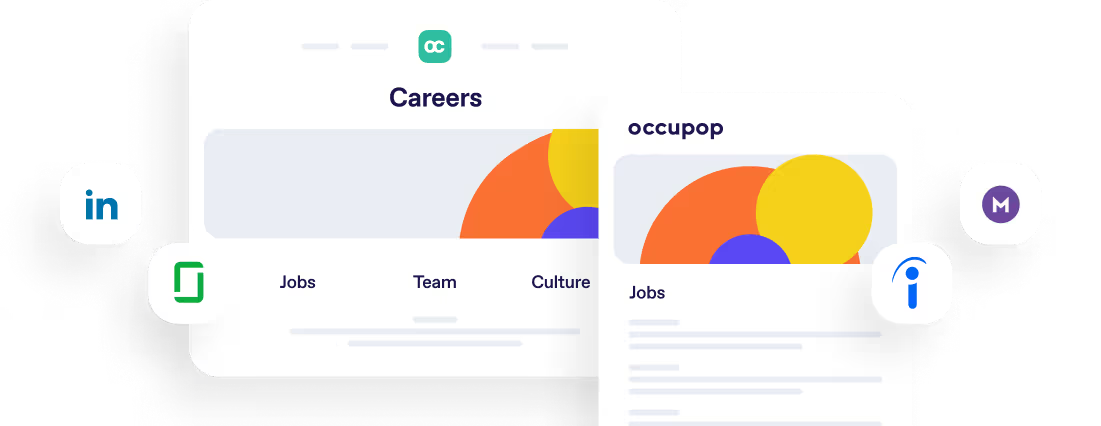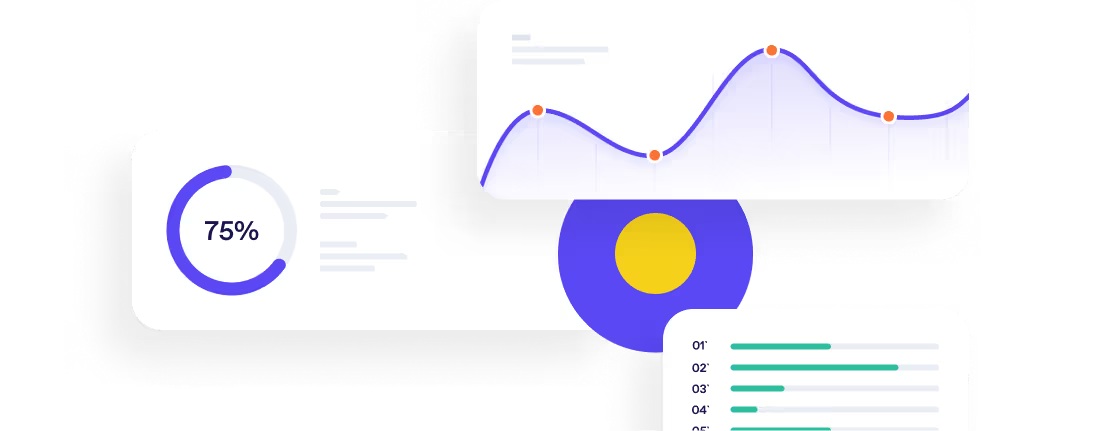Top 10 Ways To Reduce Recruitment Costs In 2025



Simultaneously, they're growing more exasperated with the subpar candidates recommended by many recruitment agencies and the exorbitant fees associated with hiring even mediocre candidates.
In this article, we will explore the strategies that top HR leaders and TA managers are employing to attract a wider range of quality candidates while achieving remarkable reductions in recruitment costs of up to 75%.
1. Prioritise Quality Over Quantity of Candidates
More applicants ≠ Better hires
While attracting the right talent is crucial, there's no need to amass a vast pool of applicants. Assessing a large number of candidates can be more expensive than concentrating on a select few well-qualified individuals. For example on sponsored job postings, if you’re sponsoring a job ad for 2 weeks, try cutting it down to 1 week or less. This not only helps you focus on all the candidates without rushing it, but it will also shorten the hiring time frame which naturally reduces hiring costs. Also, ensure that your job descriptions are detailed and specific to make sure only the right candidates apply.

2. Cut Expenditure on Job Boards
Desperate times for recruiters lead to desperate measures. For a lot of hiring teams this can culminate in them turning to job boards to find enough applicants for a role. They throw more money than ever at job boards but they simply do not get the same level of return. This has been identified in a survey by Shortlist reports, that while some job boards have in fact increased their fees by more than 300%, job ad performance has actually decreased since 2020.
A good strategy for TA teams is the turn to efficient HR software with integrated job board capabilities that can save you a substantial amount compared to the cost of individual job board subscriptions. By leveraging such software, you can identify quickly which job boards yield the best candidates, enabling you to optimise your spending. With software like Occupop, you can manage this whole process in one dashboard and post to multiple job boards in one-click.
3. Utilise Social Media to Attract Candidates
Social recruiting has proven to be a cost-effective way to hire employees. According to a Betterteam survey, social media recruitment works efficiently, as 70% of recruiting managers say they've successfully hired candidates with social media in 2023, and the process is often faster than traditional channels. HR software can simplify posting to platforms like LinkedIn, Facebook, Twitter, and your company careers page in one click, and having employees share these posts can result in higher click-through rates and more candidate attraction at no additional cost.
LinkedIn stands out as the predominant social media platform for recruitment. In a span of one week, approximately 40 million individuals engage in job searches on this platform, which is a substantial figure. By connecting with just 10% of this candidate pool, you can effortlessly identify the high-caliber candidates you need to fill your vacancies. Consequently, LinkedIn proves to be an excellent choice for initiating social recruiting efforts aimed at expeditious position fulfillment.

4. Choose Automation Over External Recruiting Agencies
While external recruitment agencies may seem like a cost-effective solution, they can become expensive in the long run. Recruitment software can help streamline routine hiring processes, such as candidate sourcing, CV screening, interview scheduling, and candidate management, at minimal or no additional cost. This not only reduces your recruitment expenses but also provides more control over the hiring process.
Recruitment software makes it easier for small to medium recruitment teams to choose recruitment automation for routine but critical hiring process tasks such as:
And much more. A modern ATS software also obviates the a lot of the need to engage external agencies for these tasks, leading to a significant reduction in recruitment costs. By selecting suitable ATS software such as Occupop, it becomes feasible to fully automate the hiring process and securely digitise job requisition workflows, as illustrated below:

5. Schedule Online Interviews
In the aftermath of the pandemic, remote hiring and online interviews have become commonplace. Scheduling interviews online eliminates the logistical costs associated with face-to-face interviews for many SMB hiring teams. Recruitment software can simplify the interview scheduling process, making it more efficient and further reducing recruitment costs.
Top recruitment software like Occupop makes the interview scheduling process easy and seamless like this:
.gif)
6. Encourage Employee Referrals
An interesting stat from a recent survey by Monster highlighted that 65% of job seekers would consider a job opportunity if they heard about it from a personal connection. Employee referral programmes are among the most reliable and cost-effective recruitment methods. From our data at Occupop, we can see that employee referrals have the highest applicant-to-hire conversion rate. On average we see that even though less than 10% of applicants come via employee referrals, they account for 40% of all new hires.
Encourage your employees to refer candidates for job openings and reward them with incentives such as gift cards or bonuses upon successful hires. Many modern ATS systems can facilitate the management of referral campaigns at no additional cost.
7. Maintain a Talent Pool
Everything you’re doing in your recruitment efforts should be about building a talent pipeline for the future, not just transacting and filling today’s open roles. A potentially great culture fit candidate but with currently no suitable open role should be stored in a talent pool for future consideration.
Imagine a scenario in which a prospective candidate, who may not be an ideal match for the current job vacancy you're advertising, yet perfectly aligns with your organisation's culture, expresses interest. Then, six months later, when a new job opening closely aligns with their skillset, you swiftly bring them on board. This results in an excellent addition to your team, eliminates the need for additional recruitment costs, and the time taken to hire aligns with their notice period at their previous employer. This method of filling skill gaps is extremely cost-effective and efficient.
A good recruitment software with talent pooling features are designed to help you grow a candidate pool over time so that no application is ever gone to waste, even if you don’t hire the candidate right away.

8. Refine Your Candidate Assessment Process
Implement smart questions to screen and evaluate the skills of candidates applying for specific roles. Automate this process as part of the hiring workflow to identify and eliminate ineligible candidates early on. This reduces recruitment costs by improving the quality of hires and streamlining the selection process.
Recruitment software for SMBs like Occupop enables automatic candidate communications to be sent at every stage of the the hiring workflow. So you can send out automated mass emails that inform candidates about whether they will be progressing to the next stage or not. This can help reduce your hiring cost significantly and of course save you valuable admin time. It also keeps your candidates in the loop at all times and helps you build a red carpet candidate experience.
INSERT-CTA
9. Monitor Your Candidate Pipeline and Other Metrics
Recruitment analytics provide valuable insights into your hiring process's efficiency and cost-effectiveness. By tracking key metrics such as source of hires, time to hire, candidate rejection rates, and talent pool data, you can optimise your hiring process and minimise costs.
If you’re struggling to keep your recruitment costs under control, here are the key questions you need to ask yourself this year:
- What is the cost per applicant for each of our hiring channels?
- Which channel is driving the most hires?
- Which channel is providing the best return on investment?
Top recruitment software like Occupop will help you easily identify the answers to these questions with detailed a reporting dashboard to users such as that illustrated below:

10. Negotiate Everything
In addition to the strategies mentioned in the article, it's important for hiring teams to consider negotiation as a valuable tool for reducing recruitment costs. This year, in particular, presents a prime opportunity for organisations to reassess and renegotiate their contracts with various service providers, including external recruitment agencies, RPO providers, job boards, and software vendors.
Negotiating contracts can yield significant savings. For instance, with external recruitment agencies, companies can seek more competitive rates or payment structures based on performance. This approach not only ensures that they are getting the best value for their investment but also aligns the interests of the agency more closely with the company's goals. When it comes to job boards and software vendors, negotiation can lead to more favourable terms, cost reductions, or bundled services that cater specifically to the organisation's needs.
Moreover, the uncertain economic landscape has prompted many vendors to be more flexible and open to negotiation as they seek to maintain long-term partnerships. With the right negotiation tactics and a clear understanding of the desired outcomes, hiring teams can secure more cost-effective solutions while maintaining the quality of their recruitment efforts. This proactive approach to contract negotiation is an essential component of an overall cost-saving strategy and should be on the agenda for every HR and talent acquisition team in their efforts to manage and reduce recruitment costs this year.

Is 2024 the year you take control of your recruitment spend?
In conclusion, recruitment costs can accumulate quickly, but with the right strategies and the use of recruitment software, you can significantly reduce your expenses, reduce your cost-per-hire and ensure a cost-efficient hiring process. Monitoring your costs and making data-driven decisions will help you attract, hire, and retain the best candidates while keeping your budget in check.
I know this has been a long article and there’s a lot to take in here. If you’ve got any questions, feel free to reach out and I will help where I can. I’d also recommend checking out these resources too:
- Driving Efficiency: How to Reduce Your Company’s Average Cost Per Hire a in-depth look into the strategies and tactics that can assist you in reducing your company's CPH.
- The Ultimate Guide to Recruitment Automation Using AI & ChatGPT designed to help you implement the most innovative recruitment automation tools and tricks with the power of AI and ChatGPT, increasing your hiring efficiency and productivity.
Every day, the Occupop team works with hundreds of small to mid sized businesses to optimise their sourcing strategies, help them manage their candidates, build strong talent pools, all while building a great candidate experience.
Get in touch today to see how we can help you reduce your recruitment spend and increase your quality hires.
Summary Points
Key take-aways on how to reduce recruitment costs in 2024
- Prioritise Quality Over Quantity of Candidates: Focus on well-qualified individuals, create specific job descriptions, and shorten the hiring timeline.
- Reduce Spending on Job Boards: Opt for Hiring software with integrated job board capabilities to save costs and identify the best-performing boards.
- Utilise Social Media for Recruitment: Social recruiting is cost-effective, with high success rates and faster processes. Leverage Recruitment software to simplify posting.
- Choose Automation Over External Agencies: Streamline candidate sourcing, screening, and management with recruitment software to reduce expenses and gain control.
- Schedule Online Interviews: Remote hiring reduces logistical costs. Use recruitment software for efficient scheduling.
- Encourage Employee Referrals: Employee referrals are reliable and cost-effective. Use modern ATS systems for easy management.
- Maintain a Talent Pool: Build a candidate pipeline for future roles, enhancing efficiency and reducing hiring costs.
- Refine Your Candidate Assessment Process: Implement smart questions and automation to improve candidate quality and streamline selection.
- Monitor Your Candidate Pipeline and Metrics: Analyse source of hires, time to hire, rejection rates, and talent pool data to optimise the process.
- Negotiate Everything: Take control of recruitment costs through negotiation and data-driven decisions.
Simple. Beautiful.
Recruitment Software.
HR updates sent straight to your inbox
You might also like...


Manage your entire hiring process simply, from engagement to management, hiring and onboarding







Simple. Beautiful.
Recruitment Software.
Recruitment Software.






